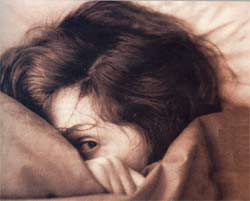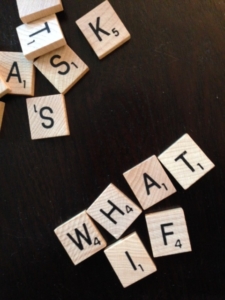Worry and GAD Therapy in Agoura Hills, CA
FAQ’s About Anxiety, Worry & Anxiety Therapy
Q: What’s an anxiety disorder?
A: An emotional disorder that involves thoughts, feelings, moods, or impulses that interfere significantly with our ability to cope. To qualify as an anxiety disorder, it must involve threat and uncertainty.
Q: Does GAD (Generalized Anxiety Disorder) really have a life of its own? Or is it just another name for major anxiety problems?
A: GAD is distinctive. People with GAD experience “sticky thinking”, repetitive and negative; physical tension; and strong, disconcerting stress responses. Extremely disturbing – even catastrophic – thoughts may often come to mind. If GAD persists, it can make relaxation very difficult, muffle our warm, upbeat feelings, and ultimately turn demoralizing.
 Q: Worry, shmurry! Everybody worries. How much more does a person with GAD actually worry than your average Harry or Heather?
Q: Worry, shmurry! Everybody worries. How much more does a person with GAD actually worry than your average Harry or Heather?
A: More than three times as much – 60% of wakeful time, on the average, versus 18% for people who’ve never had a GAD diagnosis.
Q: You keep mentioning sticky thinking (ST) – that it’s part of many people’s anxiety disorders, and GAD and OCD in particular. What’s sticky thinking?
A: A blend of repetitive or chaotic looping of negative thinking and disturbing feelings that we often struggle with when we’re apprehensive or panicky, obsessing, ruminating, or barraging ourselves with self-criticism. ST interferes our efforts to act rationally and process our strong emotions. Chaotic ST is a key part of Panic Disorder: Many former panickers report strongly benefiting from immediately reminding themselves that everything they think during the first few moments of an attack is just sticky thinking that’s not helpful and really doesn’t make sense.
To start overcoming problems with ST, remember: Don’t believe everything you think.
 Q: What’s surprising about GAD ?
Q: What’s surprising about GAD ?
A: People with GAD go that extra mile to keep family, friends, and associates from feeling bad. They’re often strongly grounded in their values as the elements of a lifestyle of basic goodness. Many are highly responsible and can be counted on; yet they often wind up inadvertently (and sometimes deliberately) taken advantage of or manipulated because these good qualities can render them vulnerable.
They may be firmly committed to fitness and are sometimes health-conscious to a fault. They can have an excellent sense of humor! But they’re often very overworked and curiously under-appreciated, and the presence of sticky thinking, stress, and tension can seriously limit their enjoyment and the savor of living.
Q: What’s unique about GAD?
A: GAD worries and everyday worries are distinctly different. GAD worries tend to be catastrophic. They may seem to tumble through your mind, one after the other. The nervous mental energy of GAD takes the form of charged-up, automatic, anxious thoughts that play lively hide-and-seek with meaningful, intentional thoughts about serious concerns. Because GAD-type thinking impedes focus on what matters the most, it can seriously hamper our ability to progress or cope. Physically, GAD is often experienced as sleep disturbance, muscle tension, headaches, and/or a nervous stomach.
Q: Do people have GAD for life? A common worry is that even if therapy helps a lot, you can’t really get better from GAD, the way you get over the flu.
A: No, they don’t; and yes, you can! Cognitive-behavioral therapy, or CBT, is scientifically proven, effective treatment for GAD. At least half the people who complete treatment with a skilled CBT therapist have been able to recover or at least improve a lot: You can hope to be far less worried and much less stressed out!
Over the past few years, using new wave techniques specialized CBT therapists are able to free their clients with GAD of the uniquely disturbing, persistent worry known as sticky thinking. Treatment can be richly enhanced with techniques of mindfulness-and acceptance-based therapy, and consequently, far more people can put GAD behind them once and for all.
David Mellinger’s new wave CBT
is effective worry and GAD therapy. At his
Agoura Hills psychotherapy offices
Mellinger specializes in the treatment of anxiety, panic, GAD,
phobic disorders, and OCD.
Q: How do OCD and GAD differ?
A: OCD (Obsessive-Compulsive Disorder) is much less prevalent than GAD. People with both disorders typically do a lot of sticky thinking, but obsessions are not realistic and seem to the individual to be inappropriate – and often quite horrible – while sticky GAD thinking reflects basically realistic but excessive preoccupation with everyday problems. GAD worries are about finances, relationships, health, family, work or school, and staying on top of everyday necessities, while the content of obsessions frequently includes “unacceptable” thoughts about such topics as contamination, sex, aggression, or religion. A person may have both OCD and GAD. Both OCD and GAD are highly treatable.
CBT & EACBT
Q: What are Cognitive Behavior Therapy (CBT) and EACBT?
A: Cognitive Behavioral Therapy (CBT) refers to psychological treatments based on scientific evidence that have been proven to be effective in treating many psychological disorders and the anxiety disorders in specific. CBT differs from many other therapy approaches by focusing on the ways that a person’s thoughts, emotions, and behaviors are connected and affect one another. The CBT therapist and the client work together with a mutual understanding that the therapist has theoretical and technical expertise, but the client is the expert on him- or herself. The therapist seeks to help the client discover that he/she is powerful and capable of choosing positive thoughts and behaviors. (Adapted from the Association of Behavioral and Cognitive Therapy website)
EACBT –Emotional Awareness-based CBT is enhanced by techniques of mindfulness and acceptance-based therapy and enriched by cutting-edge techniques for ending overworrying and other sticky thinking. Psychological techniques adapted from mindfulness meditation help to enhance our emotional awareness so we’re better able to pay deep attention to our thoughts, sensations, and emotional feelings and respond with greater clarity and a kinder attitude to our (and other people’s) disturbing emotions or disturbing negative thoughts, both as they occur and when we reflect on our experiences.
EACBT empowers people to deal with disturbing emotions, overcome pathological worry, help stop the battles within themselves, and restore hopefulness, clarity, and the positive energy needed to improve. EACBT is effective with a wide range of anxiety disorders and is uniquely beneficial treatment for GAD and mild to moderate Obsessive-Compulsive Disorder. To learn more, go to Emotional Awareness-Based Therapy.
David Mellinger’s innovative integration of new wave CBT techniques is very effective anxiety, worry, and GAD therapy. At his Agoura Hills office, Mellinger specializes in treatment of anxiety disorders, as well as depression and other mood problems.
If you’re determined to overcome your anxiety disorder… if you feel challenged and fatigued, or struggle with tough worries, doubts, and tenacious uneasiness no matter how strongly you live, how reasonable you are, or how much you try to relax – EACBT might be just what you need. Contact me – David Mellinger – if you would like to discuss doing therapy at my office in Agoura Hills.
